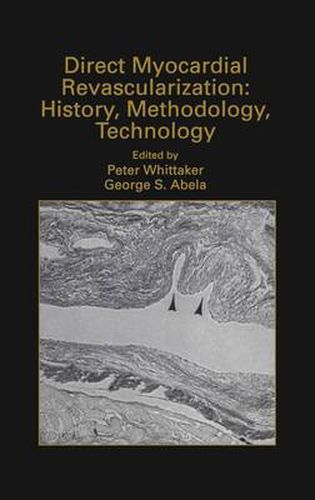Readings Newsletter
Become a Readings Member to make your shopping experience even easier.
Sign in or sign up for free!
You’re not far away from qualifying for FREE standard shipping within Australia
You’ve qualified for FREE standard shipping within Australia
The cart is loading…






This title is printed to order. This book may have been self-published. If so, we cannot guarantee the quality of the content. In the main most books will have gone through the editing process however some may not. We therefore suggest that you be aware of this before ordering this book. If in doubt check either the author or publisher’s details as we are unable to accept any returns unless they are faulty. Please contact us if you have any questions.
The last five years have witnessed an increasing interest in the subject of transmyocardial laser revascularization (TMR) as illustrated by the number of abstracts presented at the meetings of the American Heart Association and the American College of Cardiology (Figure). The ideas and concepts associated with this particular method of myocardial revascularization have changed dramatically over even this short period of time. The original premise of de-evolving mammalian hearts to recreate a reptilian-like myocardial circulation by making multiple channels through the myocardium has been almost (but perhaps not quite) completely dismissed. Now, the most popular notion is that there is an angiogenic response to myocardial channel making. It is this development of new blood vessels that is thought to be responsible for the apparent improvements in symptoms and blood flow. Along the way, the idea that a channel could stay open and allow blood to flow directly from the ventricular chamber has found little support. Rather than directly explore all of these issues and merely duplicate previously published articles, our aim was to take a novel approach: that is, to step back from these arguments and provide perspective from the vantage point of distance. In the case of trans myocardial revascularization, distance comes both in terms of history and in terms of methodology and knowledge from other fields of research. Historically, innovative methods of myocardial revascularization are by no means uncommon. The first two chapters deal with this historical’ perspective.
$9.00 standard shipping within Australia
FREE standard shipping within Australia for orders over $100.00
Express & International shipping calculated at checkout
This title is printed to order. This book may have been self-published. If so, we cannot guarantee the quality of the content. In the main most books will have gone through the editing process however some may not. We therefore suggest that you be aware of this before ordering this book. If in doubt check either the author or publisher’s details as we are unable to accept any returns unless they are faulty. Please contact us if you have any questions.
The last five years have witnessed an increasing interest in the subject of transmyocardial laser revascularization (TMR) as illustrated by the number of abstracts presented at the meetings of the American Heart Association and the American College of Cardiology (Figure). The ideas and concepts associated with this particular method of myocardial revascularization have changed dramatically over even this short period of time. The original premise of de-evolving mammalian hearts to recreate a reptilian-like myocardial circulation by making multiple channels through the myocardium has been almost (but perhaps not quite) completely dismissed. Now, the most popular notion is that there is an angiogenic response to myocardial channel making. It is this development of new blood vessels that is thought to be responsible for the apparent improvements in symptoms and blood flow. Along the way, the idea that a channel could stay open and allow blood to flow directly from the ventricular chamber has found little support. Rather than directly explore all of these issues and merely duplicate previously published articles, our aim was to take a novel approach: that is, to step back from these arguments and provide perspective from the vantage point of distance. In the case of trans myocardial revascularization, distance comes both in terms of history and in terms of methodology and knowledge from other fields of research. Historically, innovative methods of myocardial revascularization are by no means uncommon. The first two chapters deal with this historical’ perspective.